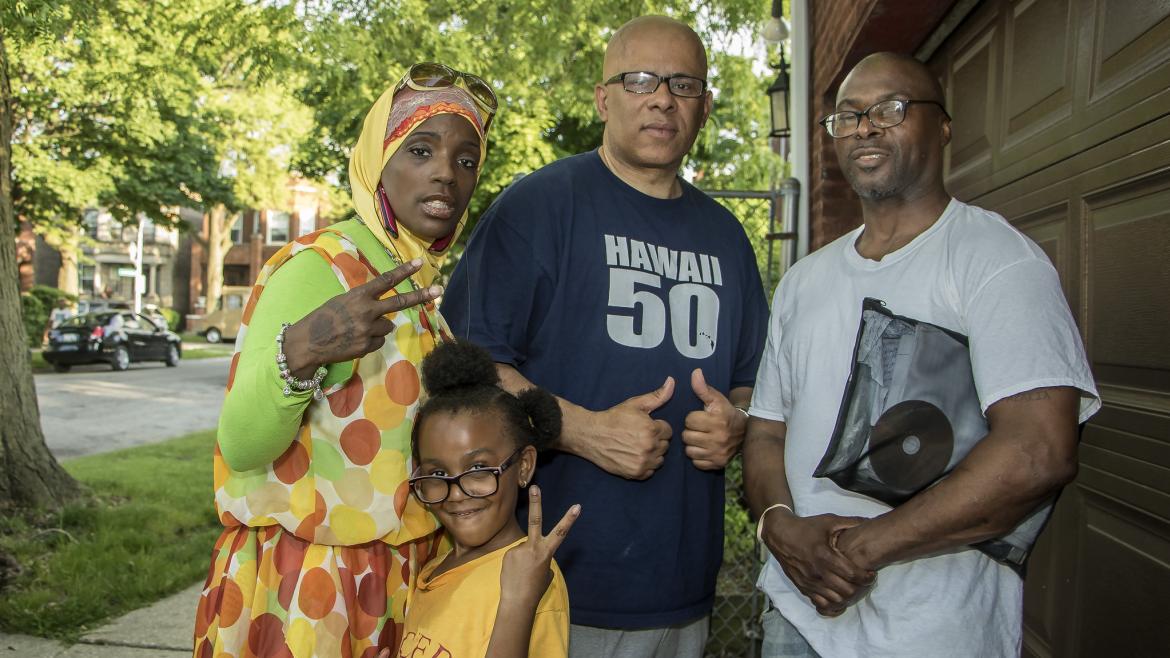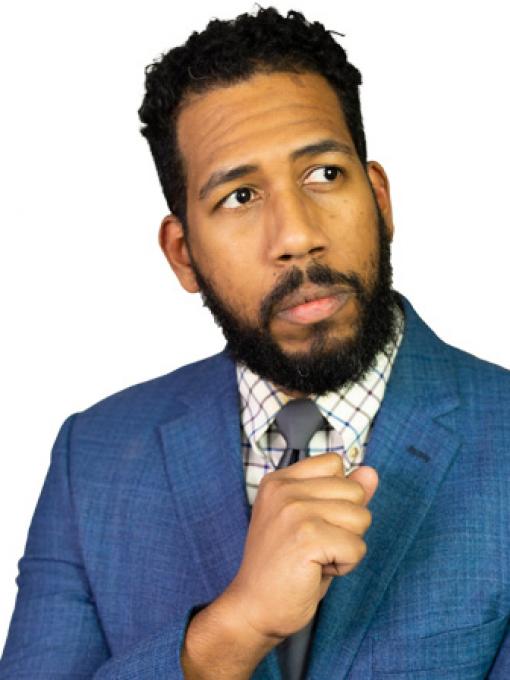“Gun violence is the leading cause of death of young Black men and the second leading killer of young Latino men, according to researchers.”
Gun violence is estimated to cost the U.S. $280 billioni each year, “the disproportionate damage inflicted on Black and brown people.” -NBCii The dollar figure is obviously secondary to the loss of life which cannot be quantified.
As Quakers we believe there is that of God in every living soul. We strive for a world where no one feels that violence is a viable solution.
As Quakers we believe there is that of God in every living soul. We do not view anyone as less worthy of a full life where every person’s potential may be fulfilled. We see the inherent worth in the victim of violence as we do those committing or potentially committing violence. We strive for a world where no one feels that violence is a viable solution.
Inter-personal violence in communities is a serious problem. Conflicts and drug transactions can result in gun violence. If we provide communities with effective alternatives like education, employment, conflict-resolution that gets at the norms of violence we can meaningfully reduce violence. Violence interrupters are a key piece of the solution and funding them is a proven strategy to make communities more peaceful and less violent.
Overview
It’s important to note that violence stems from larger systemic problems like white supremacy and classism. We need strategies to tackle inequality in taxation and investment in communities. Nevertheless, violence occurs because of conflicts in communities and violence interrupters are a good approach to helping communities solve conflict nonviolently.
Violence interrupters are people who take the knowledge of their own community and help deescalate situations that may turn violent. Best practices language from the FY2010 budget request describes: “street-level outreach, conflict mediation, and the changing of community norms to reduce violence, particularly shootings.” They must know gang violence and tough neighborhoods intimately well.
Violence interrupters or “credible messengers” as they’re sometimes called identify those most likely to commit violence, they intercede, mentor, teach nonviolence, provide alternative thought processes, and alter the group norms that would sustain or perpetuate violence. At the point of conflict, the violence interrupters will take the parties aside, try to resolve the conflict, as well as share how gun violence would affect the community and their families.
Violence interrupters are people who take the knowledge of their own community and help deescalate situations that may turn violent.
Violence interrupters can often be found canvassing their areas to build relationships with members of the community. The work also involves tracking youth and gang activity, responding to incidents, mediating conflicts, even responding at homicide scenes after the police to reduce the likelihood of retaliatory violence.
At the scene they engage community members and talk about the available services like education opportunities or job training. Providing these services builds trust in the community and makes community members more likely to engage with the community-based violence prevention services including violence interrupters.
The work can also involve promoting pro-social programming to youth such as employment training and sports. Community programming to shift away from violence as a norm include candlelight vigils, cookouts, peace walks, and other summer activities. The work of violence interrupters is time intensive and can involve reading between the lines in identifying strengths and possible services to gang involved youth.
The violence interrupters can then connect the youth to appropriate services like mental health, counseling, housing, education, or others. They require a special set of skills and are often recruited from the formerly incarcerated population.-NIJiii
Funding Violence Interrupters
The Community Based Violence Prevention within the Office of Juvenile Justice and Delinquency Prevention (OJJDP) at the Department of Justice issues grants for violence interrupter programs. Funding can also come from local sources.
The DOJ first requested $25 million in FY2010 (2009) for violence interrupters using a public health approach. Congress funded the program at $10 million.
Biden’s American Jobs Plan proposed $5 billion in anti-violence programs.
Funding for the violence interrupters program could have a transformative impact on violence in communities.
For FY 2021 Congress approved $14 million for Community Based Violence Prevention Programs, including the pathbreaking violence interrupters program. President Biden has requested $100 million for the Community Violence Intervention Initiative in FY 2022 with a broader $5 billion request in funding for anti-violence programming. How much exactly is designated for violence interrupters is difficult to disaggregate.
Funding for the violence interrupters program could have a transformative impact on violence in communities, hire people from the community, and distribute resources to get at the root causes of crime: poverty.
We can expand the VI program by creating a budget line and providing dedicated funding. It would also have the secondary effect of freeing up funds in communities that fund violence interrupters to further fund alternatives to policing—something that the grassroots have been requesting.
Methods
John Jay College of Criminal Justice evaluated the OJJDP Community-Based Violence Prevention Demonstration Program. The study looked at the methods and effectiveness of violence intervention programs including violence interrupters.
Just as local violence varies by location, so too do solutions to violence in each city.
Just as local violence varies by location, so too do solutions to violence in each city.
For example, the Boston Gun Project de-escalates potentially violent situations by conducting street outreach, connecting young people with services, and organizing interventions for gang-involved youth. The project also attempted to reduce fear in communities to break the cycle of gun violence. They did this by facilitating community meetings involving social service providers and police. At these meetings alternative life paths were provided with the understanding that focused deterrence by the police would (very controversial) occur if the targeted youth didn’t take advantage of the alternatives. These meetings changed the power dynamics in communities.
Cure Violence, formerly “Chicago Ceasefire,” is of the more popular community violence intervention platforms used throughout the country. It views community violence as behavior shaped by social norms. Similar to the Boston Gun Project, Cure Violence uses outreach workers and direct intervention to disrupt violence. This strategy was employed in Crown Heights, NY. Under this model violence interrupters are called “credible messengers.”
Implementation
From the Street by Streetiv evaluation:
The Washington, D.C. program is in the nonprofit organization Collaborative Solutions for Communities (CSC) founded in 1996. It deals with the root causes of violence in communities. With funding from the community-based violence prevention program, CSC started the Creating Solutions Together initiative. This method employs outreach workers — “people with street credibility, often people who have spent time in prison or who have past involvement in gun violence.” – NBCv They may not be called violence interrupters but are functionally very similar in their tactics. As a result, neighborhood youth violence decreased from 2006-2014. The program operated largely in the Shaw and Columbia Heights neighborhoods.
Mayor Muriel Bowser in 2017 launched the violence interrupter programvi with $5.4 million under the Office of Neighborhood Safety and Engagement.
The group norms were successfully altered in that community members took some of the same tools used by violence interrupters and were seen resolving conflict peacefully in the community.
The Crown Heights program in Brooklyn, NY created “…Save Our Streets (SOS) Crown Heights,” which is based on the public health model of violence interruption known as “Cure Violence.” “The program treats violence as a “virus” that can be “interrupted” or halted through interventions that alter community norms (such as tolerating violence as a ‘normal’ way to solve conflicts).” This methodology has been criticized as ignoring the larger systemic issues like white supremacy and classism that serve as the catalyst for violence. The Crown Heights program hired violence interrupters in 2013.
Addressing violence under the model involves three steps:
- “interrupting the transmission of violence;
- changing the thought processes of people identified as the highest likely transmitters of violence; and
- altering the group norms that would otherwise sustain and perpetuate violence.”
The group norms were successfully altered in that community members took some of the same tools used by violence interrupters and were seen resolving conflict peacefully in the community. This initiated a public campaign called “everyone is an interrupter.”
Under this model, law enforcement interventions are not an effective long-term solution to the problem of community violence. Instead building relationships in the community through canvassing and sharing resources to build trust are better means of helping the community as well as making members more likely to work with violence interrupters and community based violence prevention staff.
Between the years 2004 to 2014 the number of shootings dropped from 16 to 12. During this same period the number of violent crimes from 164 to 150. From 2010 to 2019vii violence interrupters have led to a 40% decline in shootings across all sites in the city.
Denver implemented the use of the funds to expand existing programs whereas Brooklyn (Crown Heights) implemented a new program in a specific community. The flexibility in programs funded by the solicitation makes tracking VIs and their results challenging. Anecdotes, crime statistics, and testimonials from local officials and administrators are key to evaluating the effectiveness of violence interrupters.
Baltimore received federal funds in FY2011. The violence interrupters are employed through the nonprofit Safe Streets. There are implementers that administer the programs locally in different sites throughout the city. One notable success story was the previously dangerous Cherry Hill Neighborhood which went 365+ days without a shooting thanks to violence interrupters.
[i] Everytown For Gun Safety, “The Economic Cost of Gun Violence”, https://everytownresearch.org/report/the-economic-cost-of-gun-violence/
[ii]NBC News, “Biden wants to give anti-violence groups $5 billion. Here’s how it could be spent.”. https://www.nbcnews.com/news/us-news/biden-wants-give-anti-violence-groups-5-billion-here-s-n1263990
[iii] National Institute of Justice, “Who Are the Violence Interrupters?”, https://nij.ojp.gov/topics/articles/who-are-violence-interrupters
[iv]Tomberg, Kathleen A. and Jeffrey A. Butts (2016). Street by Street: Cross-Site Evaluation of the OJJDP Community-Based Violence Prevention Demonstration Program. New York, NY: Research and Evaluation Center, John Jay College of Criminal Justice, City University of New York.
[v] NBC News, “Biden wants to give anti-violence groups $5 billion. Here’s how it could be spent.”
[vi] The Washington Post, “He used to sell drugs on D.C. streets. Now he’s paid to make them”, safer.https://www.washingtonpost.com/local/public-safety/he-used-to-sell-drugs-on-dc-streets-now-hes-paid-to-make-them-safer/2018/12/13/eea91b66-e12e-11e8-ab2c-b31dcd53ca6b_story.html
[vii] New York City Office to Prevent Gun Violence, “Interventions, https://www1.nyc.gov/site/peacenyc/interventions/crisis-management.page


